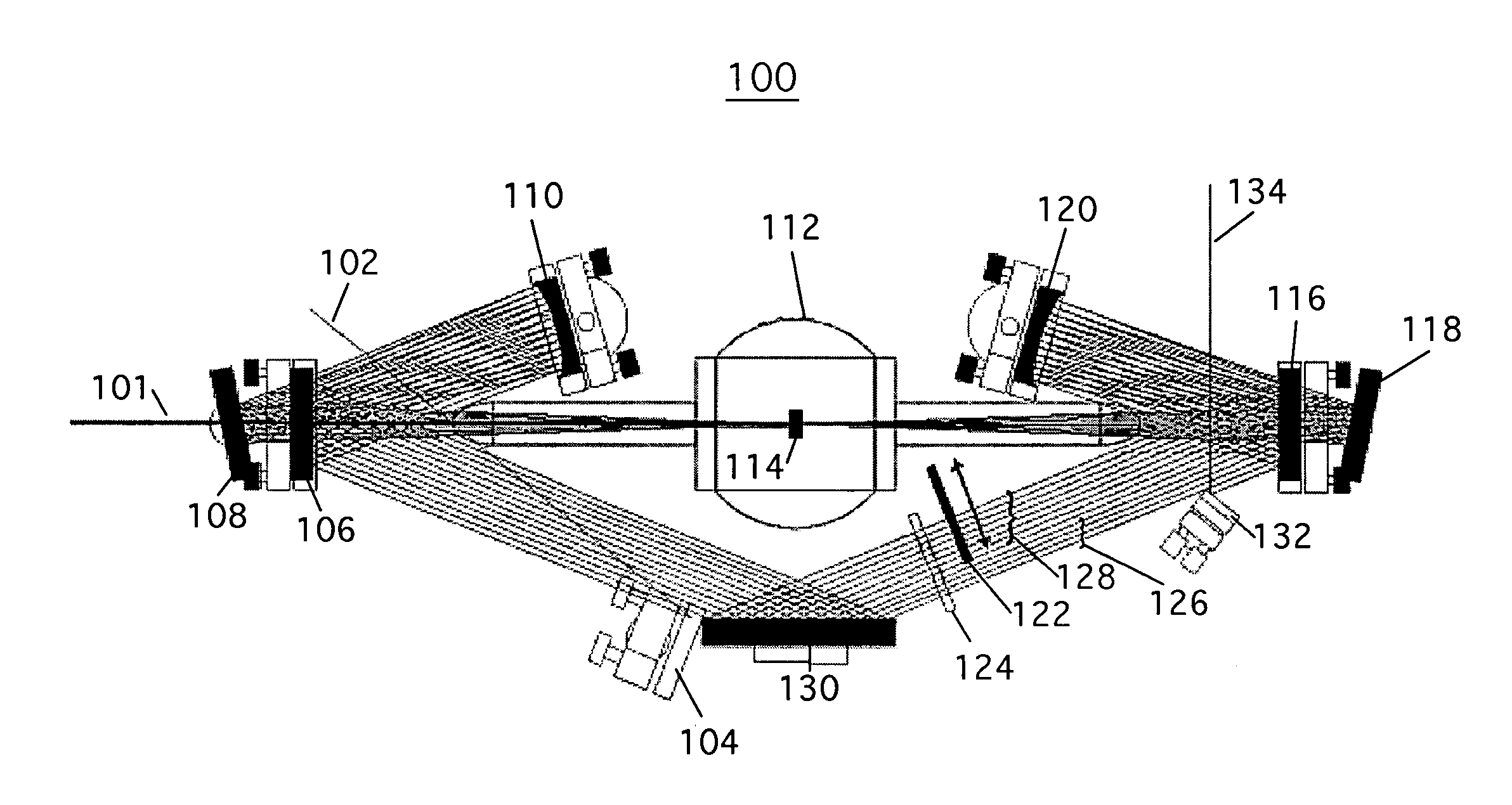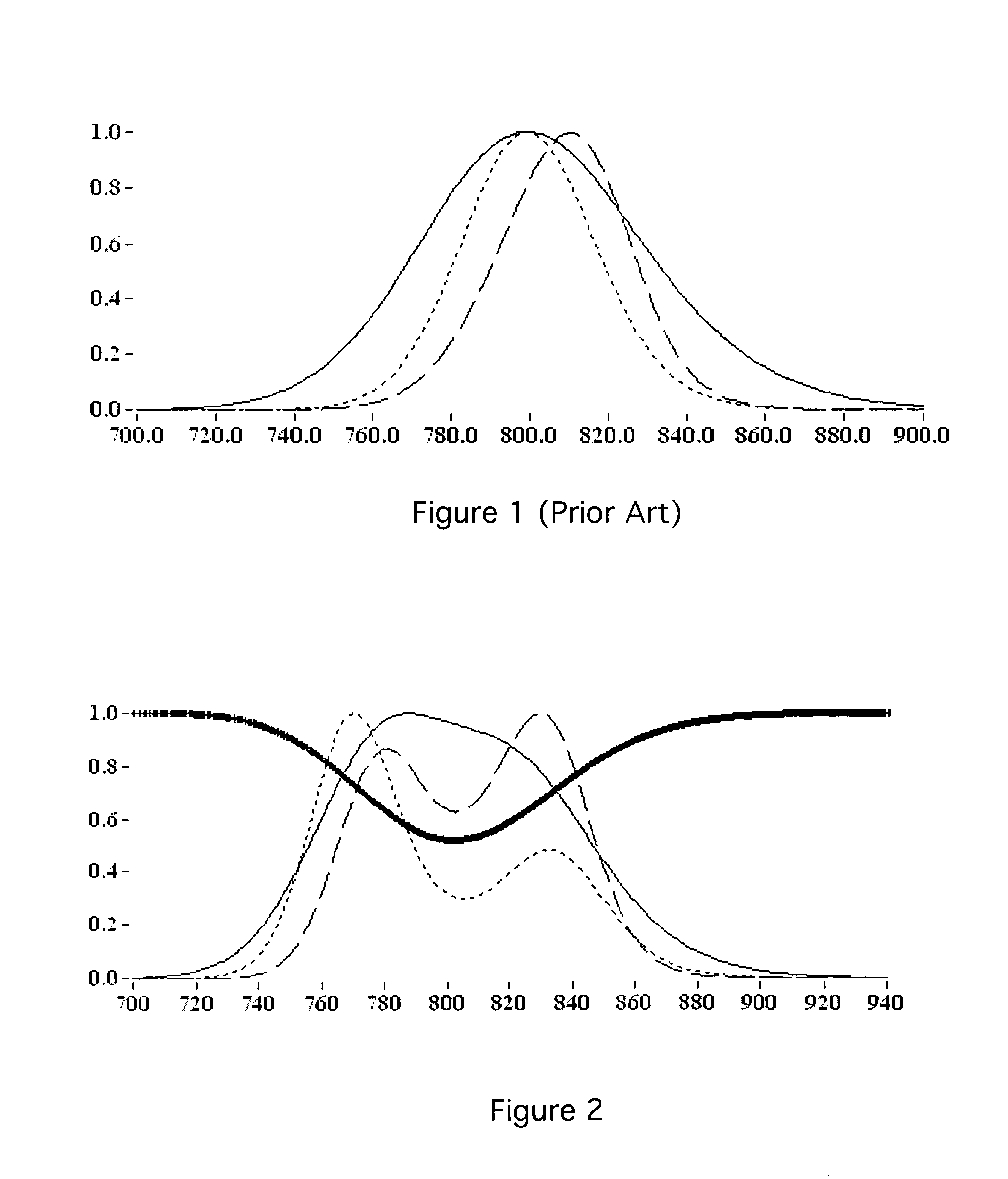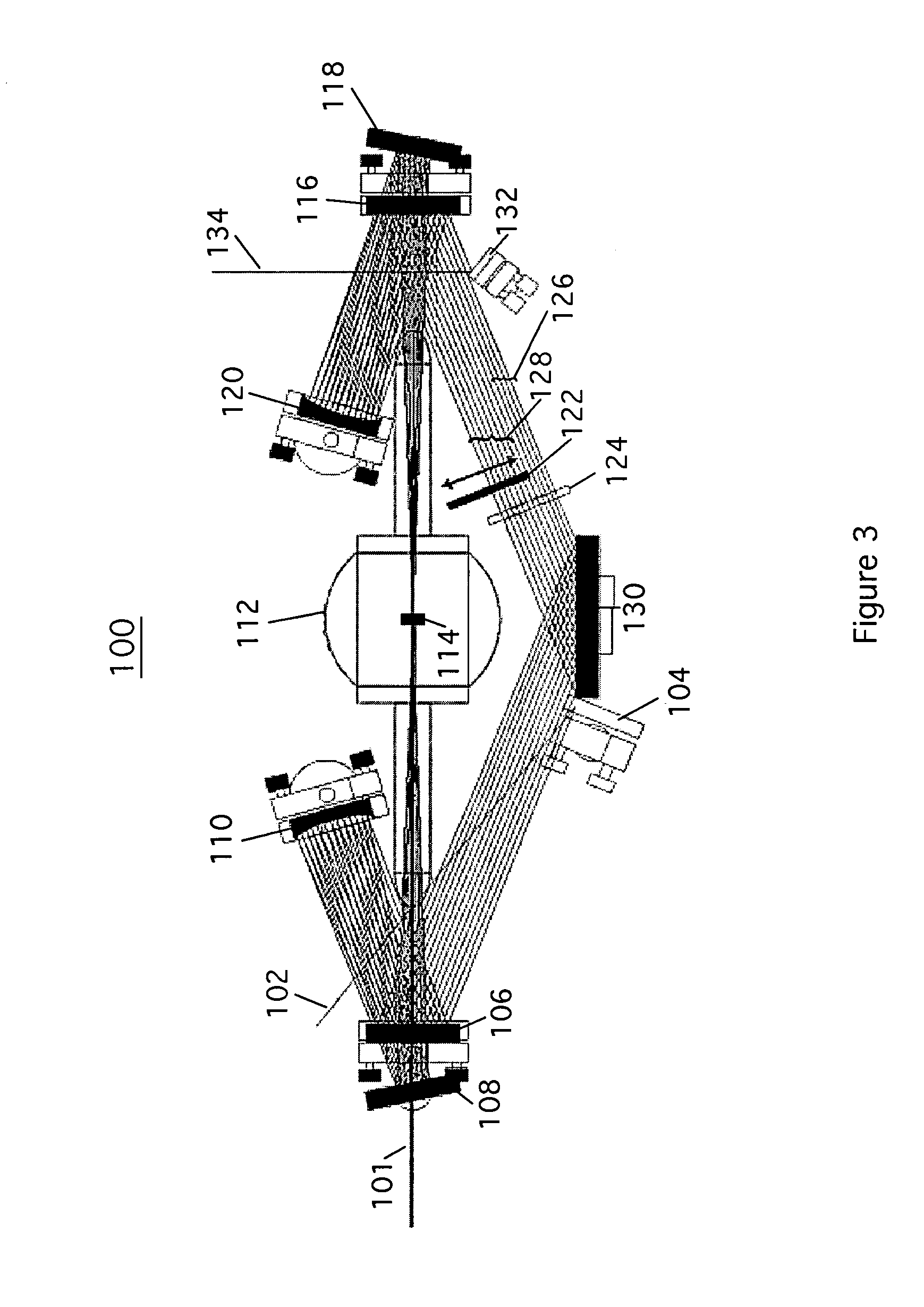Method for optimizing output in ultrashort-pulse multipass laser amplifiers with selective use of a spectral filter
a laser amplifier and ultrashort pulse technology, applied in the direction of lasers, electromagnetic transmission, transmission, etc., can solve the problems of narrow gain, minor non-ideal effect of etalon or filter, and narrow gain shape, so as to improve pulse shape and increase system gain
- Summary
- Abstract
- Description
- Claims
- Application Information
AI Technical Summary
Benefits of technology
Problems solved by technology
Method used
Image
Examples
Embodiment Construction
[0032]FIG. 1 (Prior Art) is a plot showing the effect of multiple passes of a pulse on pulse spectrum in a ti:sapphire amplifier system without a gain flattening filter. The plot shows standard gain shaping / narrowing in a Ti:sapphire laser amplifier at room temperature (300 K). The solid curve is the input spectrum from the oscillator, the short dashed line is the spectrum after seven passes in the amplifier, and the long dashed is output spectrum from amplifier, after twelve passes. The spectrum after seven passes exhibits gain narrowing but little spectral pulling because it is not extracting significant energy, yet (it is below saturation), and therefore the red end of the spectrum (temporally the first wavelengths to see the gain as the pulse goes through the gain media) is not “stealing” gain from the blue (trailing) end of the spectrum. The spectrum after 12 passes shows a significant red shift compared with 7 passes, due to the combined action of gain saturation with positive...
PUM
 Login to View More
Login to View More Abstract
Description
Claims
Application Information
 Login to View More
Login to View More - R&D
- Intellectual Property
- Life Sciences
- Materials
- Tech Scout
- Unparalleled Data Quality
- Higher Quality Content
- 60% Fewer Hallucinations
Browse by: Latest US Patents, China's latest patents, Technical Efficacy Thesaurus, Application Domain, Technology Topic, Popular Technical Reports.
© 2025 PatSnap. All rights reserved.Legal|Privacy policy|Modern Slavery Act Transparency Statement|Sitemap|About US| Contact US: help@patsnap.com



